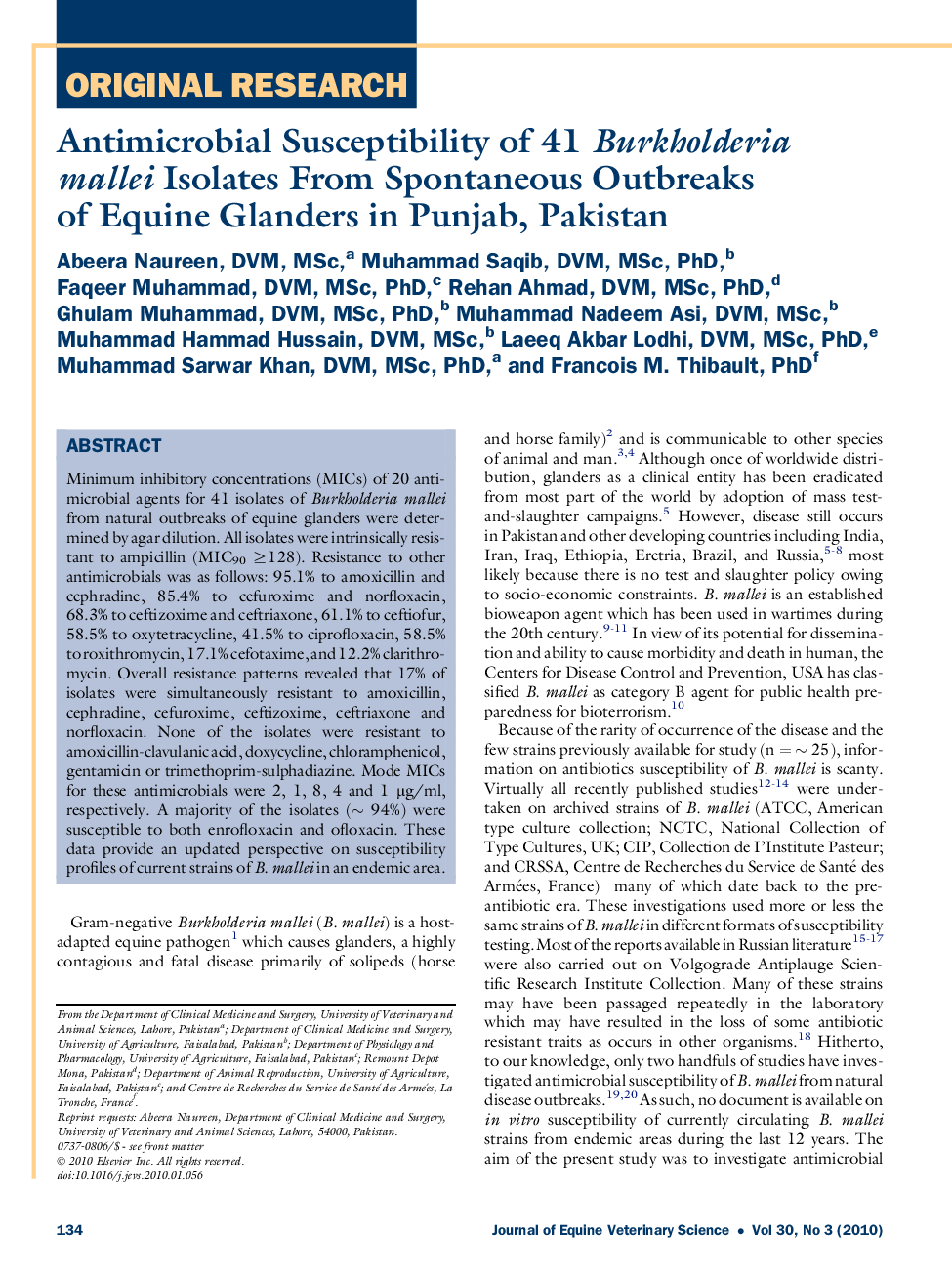| Article ID | Journal | Published Year | Pages | File Type |
|---|---|---|---|---|
| 2396200 | Journal of Equine Veterinary Science | 2010 | 7 Pages |
Minimum inhibitory concentrations (MICs) of 20 antimicrobial agents for 41 isolates of Burkholderia mallei from natural outbreaks of equine glanders were determined by agar dilution. All isolates were intrinsically resistant to ampicillin (MIC90 ≥128). Resistance to other antimicrobials was as follows: 95.1% to amoxicillin and cephradine, 85.4% to cefuroxime and norfloxacin, 68.3% to ceftizoxime and ceftriaxone, 61.1% to ceftiofur, 58.5% to oxytetracycline, 41.5% to ciprofloxacin, 58.5% to roxithromycin, 17.1% cefotaxime, and 12.2% clarithromycin. Overall resistance patterns revealed that 17% of isolates were simultaneously resistant to amoxicillin, cephradine, cefuroxime, ceftizoxime, ceftriaxone and norfloxacin. None of the isolates were resistant to amoxicillin-clavulanic acid, doxycycline, chloramphenicol, gentamicin or trimethoprim-sulphadiazine. Mode MICs for these antimicrobials were 2, 1, 8, 4 and 1 μg/ml, respectively. A majority of the isolates (∼ 94%) were susceptible to both enrofloxacin and ofloxacin. These data provide an updated perspective on susceptibility profiles of current strains of B. mallei in an endemic area.
